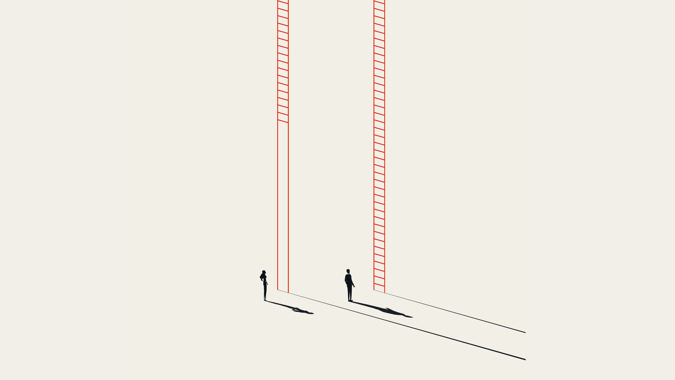
The gender pay gap and the action gap in Australia

Efforts to decrease the gender pay gap in Australia are being hampered by an “action gap” where organisations fail to embed policies and strategies.
The latest scorecard from the Australian Government’s Workplace Gender Equality Agency (WGEA) from November 2018 reveals that although the gender pay gap is in a downward trend, men still out-earn women by an average of 21.3%, or $25,717 a year. The three industries with the widest gender pay gaps are financial and insurance services (30.3%), construction (29.4%) and rental, hiring and real estate services (26.3%).
Female representation at the board level has a long way to go, with just over 35% of the boards and governing bodies in WGEA’s dataset having no female members. For boards with female representation, women make up just 25.8% of the membership. Data from the Australian Institute of Company Directors tells a similar story, with women making up 29.6% of boards across the ASX 200.
Gender pay gaps favour men across all levels of the workforce. The proportion of women in management has increased slightly but most senior roles (especially CEOs) are still dominated by men. Only 17.1% of Australian CEOs are female.
Policies and strategies
Through the analysis of its impressive dataset of 4.1 million employees (40% of all employees in Australia), WGEA reports that employer action delivers results. There has been an increase in the number of employers analysing their remuneration data for pay gaps (up 4% to 41.6%), and 75% of employers now have policies or strategies in place to improve equality in areas including:
-
retention
-
promotions: women now comprise 39.1% of all managers, with 43.3% of manager appointments in 2017–18 going to women
-
promoting flexible work: 70.7% of employers have a flexible work policy or strategy.
The action gap
However, having a policy or a strategy doesn’t necessarily mean things will get done. WGEA reports a trend where organisations have policies in place but are not making managers accountable for embedding them. Key figures include:
-
41.5% of organisations that analysed their pay data took no subsequent action to close the gap.
-
Only 31.4% of organisations have implemented KPIs for managers relating to gender equality outcomes.
-
Only 5.2% of employers with flexible work policies have set targets for employee engagement.
The three most common actions following a pay gap analysis are identifying the cause of the gap, reporting pay equity metrics to the executive, and reviewing remuneration decision-making processes.
Flexible working and the action gap
While discrimination, bias, underrepresentation in senior roles and other factors all influence the pay gap, a lack of workplace flexibility is seen as a key lever to address the issue. Women are paid less, in part, because they spend a greater time out of the workforce than men, and are discouraged from re-joining the workforce due to insufficient flexibility offerings.
The figures are startling – US-based research from Harvard’s Claudia Goldin found that female MBAs earned about 95% of their male colleagues’ remuneration shortly after graduation, but this slid to just 57% of men’s pay 12 to 15 years later when women are most likely to take time out of the workforce. In other words, women’s average pay declines compared with men’s over the course of their careers.
Gobin explains that the “flexibility penalty” exists because employers prefer to promote people who are full-time, working long hours (at the office) and develop their relationships with clients without any significant break. This group is – predictably – disproportionately male.
Although 70.7% of employers now have some sort of flexible work policy, there remains an “action gap” in terms of ensuring that flexible working doesn’t come with lower pay packets and poorer promotion prospects.
A 2018 report on women at work by PwC titled Time to Talk found that:
-
42% of female respondents were nervous about the impact children might have on their career.
-
48% of new mothers were overlooked for career advancements because they’d had children.
-
27% said they did not take the full amount of parental leave they were entitled to because they believed it would have a negative impact on their standing at work.
-
38% said that taking advantage of work-life balance had negative consequences at their organisation.
The action gap in terms of flexibility is clear – firstly, employers promoting flexible working must take measures to minimise the “flexibility penalty”. Secondly, employers must engage their employees to change the perception that flexible working or having children will have a negative impact on their careers.
Talk to Six Degrees Executive to learn more about how gender equality policies can be embedded through subsequent action.
Related

.jpg?width=352&name=FMCG%20Sales%20-%20Blog%20(3).jpg)
FMCG Sales: 2025 Trends & Hiring Challenges
In a market defined by consolidation, and caution, FMCG Sales leaders are facing increased pressure...
.jpg?width=352&name=Untitled%20design%20(8).jpg)
B2B Sales: 2025 Trends & Hiring Challenges
In an economic climate marked by caution and cost control, B2B sales leaders are under increasing...

 Accessibility
Accessibility
